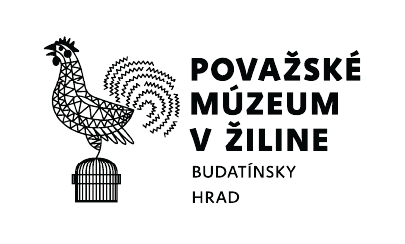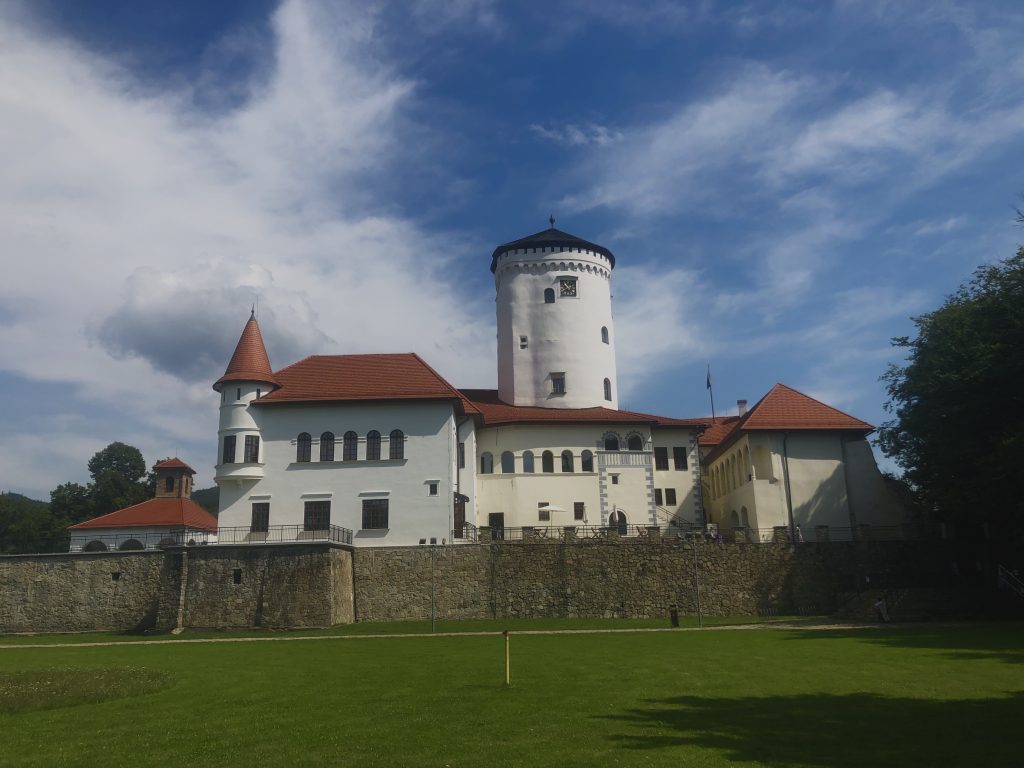
Budatín castle
Budatínsky hrad was built in the 13th century and used to protect long-distance roads next to Váh and Kysuca rivers. The oldest part of the castle is a cylindrical tower, which was originally surrounded by a low perimeter wall and a moat, through which probably led the drawbridge. Thanks to the moat, Budatín castle was one of a few water castles in Slovakia. The castle has undergone several reconstructions in Renaissance, Baroque and Classicist style through centuries. The owners of the castle were several nobles e.g. Matúš Čák Trenčiansky, Suňog family, Čáki family. The last owner of the castle was count Gejza Čáki. He owned the castle till the end of World War II, when the castle was plundered by members of new regime..

Budatín park
The historical park at the Budatín castle has an area of 4.7 ha. It is one of the largest and most beautiful parks in Žilina. Its origins date to the second half of the 18th century, in 2009-2010 underwent major revitalization. Domestic woods predominate in the park. Especially, large leaf linden, elms, European ash. There are also several foreign woods e.g. red oak, ginkgo biloba. The oldest trees are about 300 years old. The highest trees reach a height up to 30 meters.
The chapel
The chapel was built in 1745 by Anton Suňog, who was the owner of Budatín castle during that period. The chapel was dedicated into Immaculate Conception of the Virgin Mary. It was used till the end of World War II, from the 60´s of the 20th century till 2003 was used by district State archive. Illusory altar architecture in which is altarpiece of Immaculate Conception of the Virgin Mary by Viennese painter K. J. Aigen – it is the most precious artistic and historical monument in the chapel. Nowadays, the interior of the chapel is used for civil wedding ceremonies.
The castle exhibitions
The castle was opened after the reconstruction in 2016. It offers a tour of the 3rd floor and the tower. In the exhibition History of Žilina will the visitor find collection of items related to the history of Žilina city. The collection of executioner´s swords from is certainly interesting. There are also presented objects belonging to craftsmen who established craft production in the territory of Žilina and created the first guild communities.
The furniture exhibited in the castle´s expositions comes from the 18th to the 20th century. The tower of Budatín Castle, opened in 2014, hides many interesting items. There is an exhibition of historical maps, a picture gallery, an exhibition of clocks and the tour is completed with a view of the city of Žilina and its surroundings. The last exhibition opened in 2019 is archaeological exhibition. It is dedicated to fortifications and their development from prehistoric times to the late Middle Ages. There are three big models of Budatín castle that show its historical forms.
Wirecraft exhibition
The exposition of wirecraft at the Budatín castle area is the only specialized exhibition of its kind in the world. Wirecraft is Slovak unique. It originated at the beginning of the 18th century as an additional source of livelihood in the poor mountainous region of north-west Slovakia, around Žilina, Bytča and Kysuce. At the beginning, an itinerant craft lost its local character during the 19th century and the Slovak wire-workers spread throughout the world. Due to offering a unique product, they found good conditions for doing business and started setting up workshops. Handicraft workshops and manufactories were almost everywhere in Europe, North Africa, North and South America, Russia, China, India as well. Some of wire-workers became self-made millionaires. An economic boom of the craft was broken off by World War I and in the mid-20th century practically disappeared. The permanent exhibition in the so called Wirecraft Hall reflects wirecraft history and material culture of this unique Slovak craft.